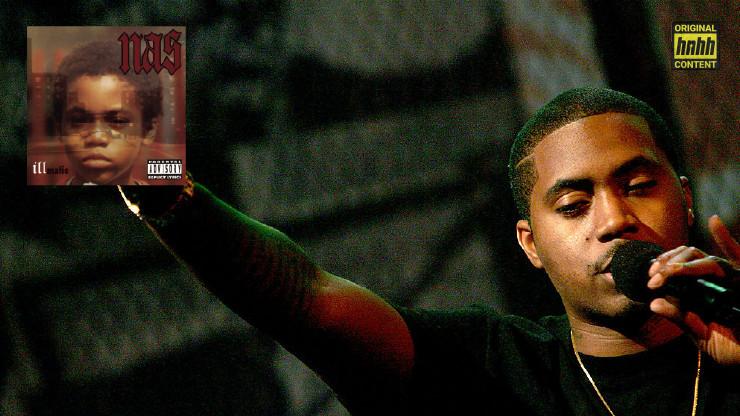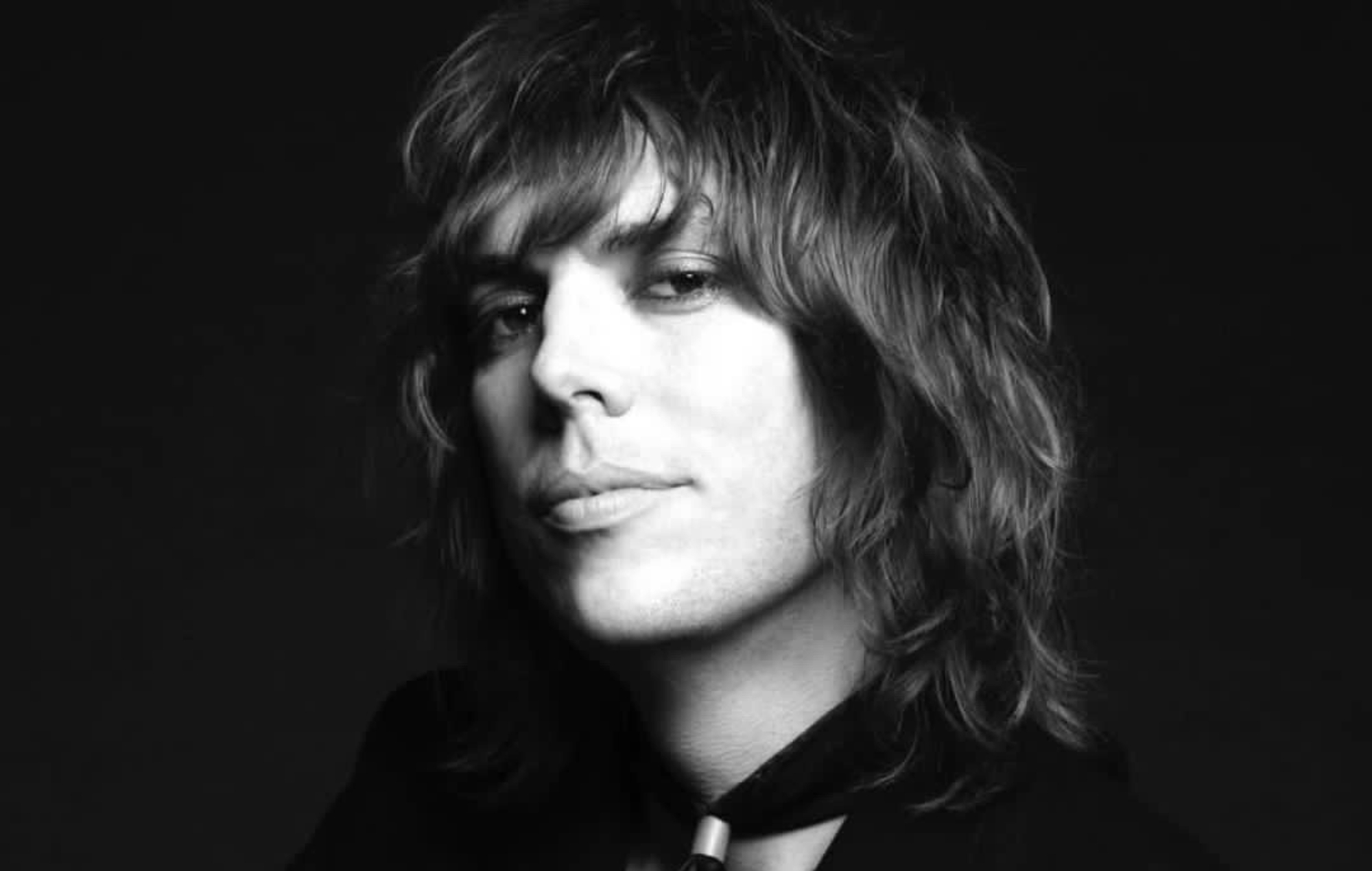Nas’ Illmatic is canon and so is its cover art. The iconic album immediately brings to mind the image of the Queensbridge projects overlaid with a young Nasir Jones’ face. It’s one of those album covers you can recognize in a glance whether it’s a tribute or a spoof. The NFL did a (slightly bizarre) feature visualizing hypothetical album covers, which included an Illmatic treatment of Dez Bryant. So many artists have riffed on Nas’ well-known cover (J. Cole, Lil Wayne, possibly Zayn) that it may come as a surprise that Nas’ album art is itself homage to a jazz album.
The Howard Hanger Trio released A Child Is Born in 1974. The album includes jazz covers of Simon and Garfunkel and The Beatles in addition to original songs. Anyone familiar with Illmatic will have no difficulty spotting the similarities between its album art and that of A Child Is Born. The Howard Hanger’s Trio’s album depicts a dilapidated row of houses beneath a semi-transparent young girl’s face. The only prominent words are written on a street sign that says “DEAD END.” It’s impossible not to draw a connection between the depressing atmosphere of the street image and the young girl’s future. The sense of poverty is palpable in the ramshackle buildings. It’s easy to see how Nas was inspired by the contrast of the child’s unspoken promise against a hopeless-looking backdrop. In my research on the Howard Hanger Trio, nearly all the comments pointed to Nas–either saying they were brought to the jazz album by Nas or announcing that they knew the Trio’s cover art inspired Illmatic’s art; it’s always a testament to a work of homage when it overshadows its point of reference.
On both album covers, the child’s face fades into the background image. There is a symbolic erasure created by the transparency that blends the two images together and makes them impossible to disentangle. The dismal environment is an undeniable part of the child and there is something ominous about how the child must be viewed in conjunction with the street where he/she lives. Nas says, “Odds against Nas are slaughter,” which can be said for all children growing up impoverished communities. The striking visual effect of framing the innocence of a child against the bleak environment he’s living in is a reminder of how fragile that innocence is.

Paul Hawthorne/Getty Images
“The World is Yours” is one lens through which to view Illmatic’s artwork. The song’s title is an allusion to a scene in Scarface when Tony Montana is galvanized by a blimp that reads: “THE WORLD IS YOURS.” Scarface is a story about someone who came from nothing and managed to create an entirely different reality for himself. There’s a message of promise in Nas’ lyrics: “My strength, my son, the star, will be my resurrection/Born in correction, all the wrong shit I did, he’ll lead a right direction.” The idea of children being vessels of hope is not new, but applied in the context of Illmatic, the album art can be interpreted as hopeful. You see a young kid with a fixed expression on the cover and you imagine that he can grow up and become Nas–a massive success.
In the music video for “The World is Yours,” a young boy watches television in a small apartment. On the screen, Nas (as Tony Montana) is in a bubble bath drinking champagne while a woman dressed like Michelle Pfeiffer’s character puts on makeup in the background. The young boy is inspired by Nas’ apparent wealth and you can see how the song’s imagery encourages a connection between the visibility of Nas’ success and the young boy feeling inspired to reach the same heights. There’s a Horatio Alger sensibility underlying the song. It endorses agency in one’s own life and the capacity to overcome the odds. The video ends by zooming out on the boy’s apartment so you can see that he lives in a housing project that looks just like the one on the cover of Illmatic.

Official Artist Artwork
Quiet inspiration is one possible interpretation of the album art. But the flip side of the coin is that the kid never emerges from Queensbridge. Or maybe he sees Scarface and takes a different, pro-violence-and-crime message from it. And this is when the “Life’s A Bitch” mentality challenges the “The World is Yours” mentality and depicts the cover art in a completely different light. In a way, “Life’s A Bitch” preaches the same message as “The World is Yours.” Both songs espouse the notion that getting out of poverty is possible, but you have to make the decision to do so. But the difference is that “Life’s A Bitch” approaches getting out of poverty by appealing to a nihilistic mindset. Nas says, “N***s I used to run with is rich or doin’ years in the hundreds”–so life is basically a crapshoot. You could get rich or you could go to jail, but taking the risk is better than continuing along in a life of desperation. There’s a nothing to lose philosophy behind “Life’s A Bitch” that captures why so many young men end up in the system.
When you look at Nas’ portrait on the cover of Illmatic with this worldview in mind, suddenly the child’s face ceases to radiate hope. Instead, there’s a bleak reality that young men and boys are being compelled to make mercenary choices due to lack of opportunity. Young Nas had the hardened expression of a kid who’s seen too much and in this light, the album art appears desolate. The young boy’s fate is already decided and he’s most likely going to end up a statistic.
The beauty of Illmatic’s album art is how it jibes with the content of the album. Nas holds competing optimistic and pessimistic views. No song inhabits this antinomy better than “One Love.” In “One Love”, Nas writes letters to his friend, Born, who’s serving time. He’s trying to tell Born to keep his head up in prison by sending him updates about life outside. Nas congratulates Born on having a son, but the rest of the news about betrayals and violence is a depressing counterbalance. On one hand, Nas is reminding Born what he has to live for once his sentence is over. But on the other, Nas has inadvertently reminded himself of how dismal their reality is. The original intention of positivity is subverted by the fact that there’s ostensibly nothing better going on outside of prison than inside. Nas exposes the near impossibility of holding onto hope in a hopeless place and this difficulty is manifest in the album cover. An album cover of what is debatably the best rap album of all time, in which a seven-year-old Nas manages to simultaneously channel defiance, promise, and innocence.








